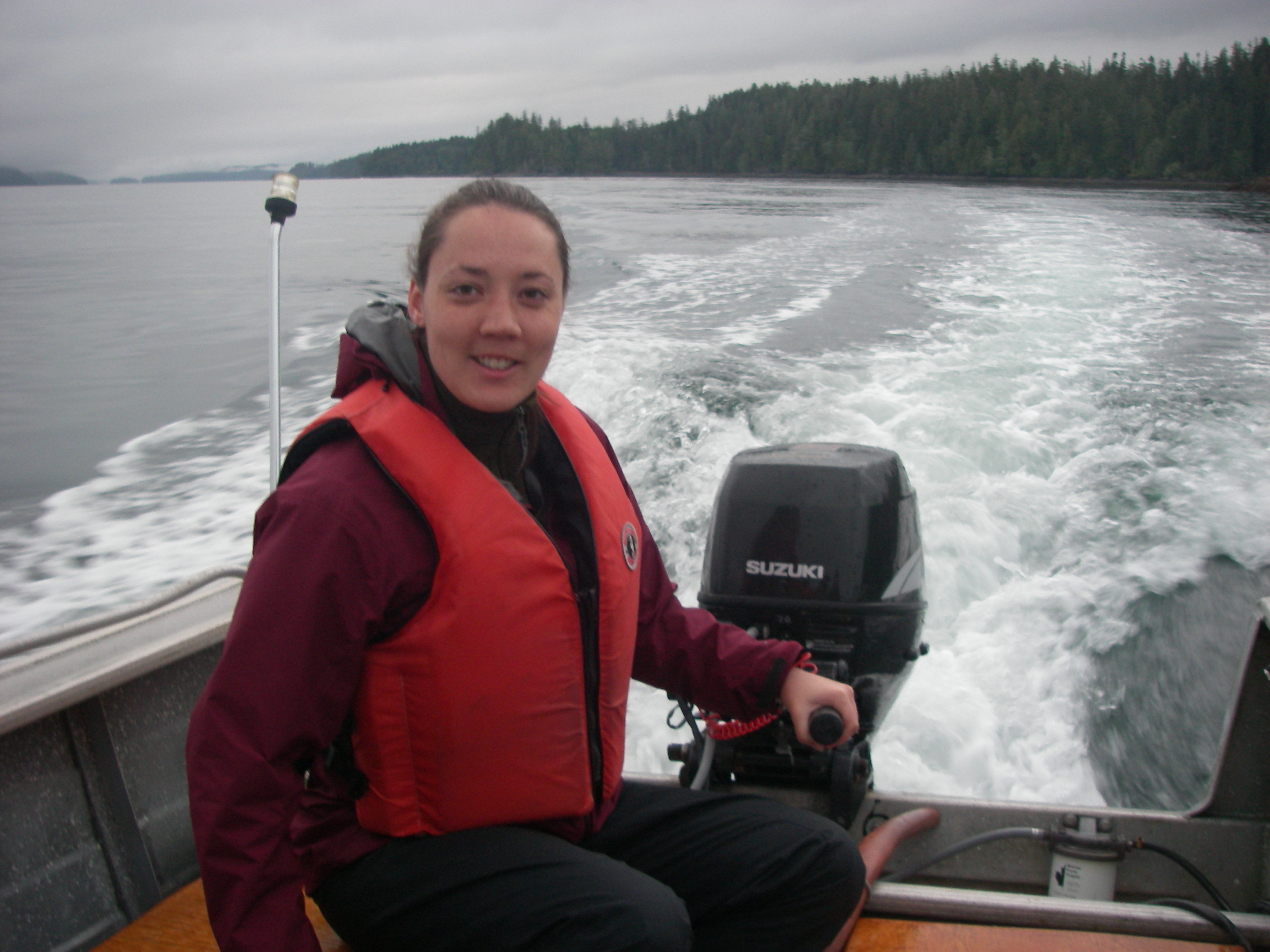The Seaweed and Integrated Multi-Trophic Aquaculture (IMTA) Research Laboratory of
Dr. Thierry Chopin
Caroline Longtin
Postdoctoral Fellow
For the past 15 years, the kelps Saccharina latissima and Alaria esculenta have been cultivated as the inorganic extractive component of the Integrated Multi-Trophic Aquaculture (IMTA) system from fall until early summer on the east coast of Canada. The absence of year round crops at the sites, and the need to increase the biomitigative capacity of the IMTA system during summer, led us to investigate the development of the cultivation of Palmaria palmata (dulse). Being present in summer, accumulating high levels of nitrogen, and having an established commercial value, makes P. palmata an ideal candidate as a summer species for dissolved nutrient biomitigation, especially at a time when local cases of overharvesting have been reported.
While P. palmata has been harvested for centuries for human consumption, its large-scale cultivation has never been successful. The problem is that P. palmata has a complex life history, alternating an asexual tetrasporophyte phase with a sexual gametophyte phase; moreover, female gametophytes are microscopic crusts, while male gametophytes are macroscopic and indistinguishable from tetrasporophytes when they are not reproductive. The fact that sexual reproduction depends on females being fertilized by males of the previous generation, in combination with the observation that mature tetrasporophytes are present in high abundances during all seasons, suggests that there may be an unknown asexual life history phase. We plan to investigate this possibility, which could benefit culturing practices by eliminating the need for sexual reproduction to create multiple generations in culture, thereby reducing the pressure on natural populations.
We propose the use of a sex-linked molecular marker to identify the morphologically indistinguishable immature male gametophyte and immature tetrasporophyte. This method has been used to differentiate between morphologically similar life history stages in the red alga Gracilaria gracilis, using a random amplified polymorphic DNA (RAPD) marker. A RAPD marker is a DNA fragment resulting from PCR amplification of random segments of genomic DNA with a single primer of arbitrary sequence. A RAPD marker can be applied to P. palmata to identify male gametophytes and tetrasporophytes if a specific random fragment is found in tetrasporophytes, but is not present in male gametophytes. We are in the process of testing numerous random primers to find a RAPD marker that can distinguish between male gametophytes and tetrasporophytes. The RAPD marker can then be used to determine the ratio of male gametophytes to tetrasporophytes in natural populations, because anecdotal evidence suggests that tetrasporophytes are more abundant than males in the field.
This research will provide a method to identify immature male gametophytes and tetrasporophytes, which will provide insight into the population ecology of P. palmata by determining the ratio of male gametophytes to tetrasporophytes at various field locations. The sex-linked marker identified in this study will assist us in investigating the possibility of an asexual life history stage in P. palmata, which could improve the efficiency of cultivation practices without placing pressure on natural populations.
We are also working on developing the cultivation of P. palmata as an IMTA species in the Bay of Fundy. In May 2015, we had success seeding twines with tetraspores in the laboratory. We deployed those twines at an aquculture site in early July and are hoping to harvest the P. palmata in the fall.
If we can successfully cultivate P. palmata in the summer months this will allow us to have multiple seaweed crops each year, increasing the biomitigation capacity of the IMTA system. It will also satisfy the increased demand for P. palmata as a food resource.

 Accessible Version
Accessible Version